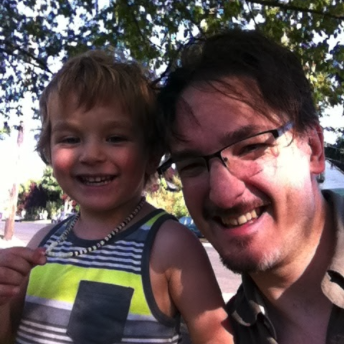We live in a world of varying greys. There may possibly have been a few human beings throughout history who were purely evil, but they are likely to have been vanishingly rare. In the same vein, there have probably been as few, or even fewer, purely good human beings. The world throws so many challenges in the way of a person’s life that it’s probably more difficult to sustain pure goodness. It’s so easy to fall prey to petty jealousy, greed, hunger, lust etc.
One of the huge advantages that humans have, among all the other animals on this planet, is the ability to categorize things. Humans like to place things in clearly defined boxes. It helps them to make critical snap decisions in life threatening situations. Those who were better at telling the difference between predator/prey or food/poison in an efficient manner ended up having more children, which led to more people having that categorization ability. Research has confirmed that this was a huge advantage for humans as a species, but it has led to a tendency to define things in a binary manner: pretty/ugly, big/small, tasty/yucky etc.
Humanity brings that tendency to define things in a binary manner to storytelling and fables of Good versus Evil have been a cornerstone of culture through the ages. The Zoroastrian religion defined itself, in part, by the conflict between good and evil more than 3000 years ago. A very famous modern novella, Heart of Darkness by Joseph Conrad, talks about how every human being has an inner evil. Lord of the Rings, by J.R.R. Tolkien, is of course a very famous example of a battle between the forces of good and the forces of evil.
In the modern era there has been a movement away from such binary storytelling. Stories such as Casablanca and Breaking Bad have focused on characters that are neither good nor bad necessarily, though a strong argument can be made that Walter White ended up on the bad side. The effort to embrace humanity’s shades of grey has grown, but black and white tales are still an incredibly vital source of drama and culture. Living in a world of varying greys becomes oppressive. The difficulty in choosing between seeming hundreds of different kinds of toothpaste that will all get our teeth clean, or between the multitude of fruit varieties that will all taste delicious, can be exhausting. When we pick up something to read it can be very comforting to let go of that constant need of our brains to turn the choice between different shades of grey into a black and white issue. Just because human beings very rarely get to make a choice that has such clearly defined parameters doesn’t mean that they are less valuable to read about.
Classic fantasy settings offer a way to tell clean, morally unambiguous, tales. The more limited framework of a fantasy realm allows the writer to more reasonably ignore the infinite variance of the real world. From there the writer can weave fables that focus on particular bits of morality. It allows them to write a believable hero that is good, pure and easy to root for. The hero’s inevitable conflict with a vile antagonist can be brought to a well defined and incredibly satisfying conclusion. This satisfaction can give a sense of peacefulness that modern life makes all too difficult to achieve on a day to day basis.
So sit back and enjoy a simpler, more gratifying, tale by picking up a good fantasy novel.
###
 Sean Gallagher is the author of the upcoming novel, Mysts of Mythos, first book in a new series of historical fantasy. Raised in Syracuse, NY. He moved to Oregon while still in high school and currently resides in Portland with his wife, Monica, and son, Rune. The Gallaghers are also the proud human friends of Blanca the dog and Thor the cat.
Sean Gallagher is the author of the upcoming novel, Mysts of Mythos, first book in a new series of historical fantasy. Raised in Syracuse, NY. He moved to Oregon while still in high school and currently resides in Portland with his wife, Monica, and son, Rune. The Gallaghers are also the proud human friends of Blanca the dog and Thor the cat.
Check out his website or join his mailing list for further updates: www.mystsofmythos.com
‘Like’ his page on FaceBook: https://www.facebook.com/mystsofmythos
Follow him on:
Twitter: @Faolan
Instagram: @MystsOfMythos

